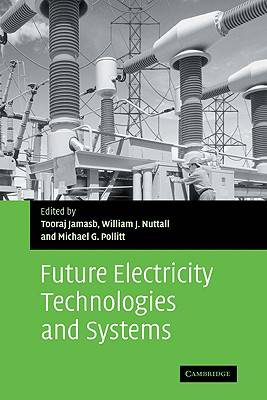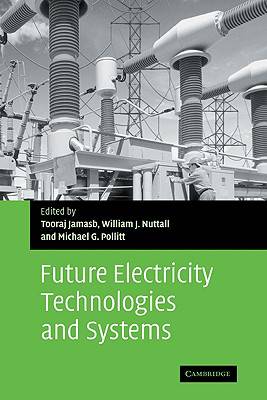
- Afhalen na 1 uur in een winkel met voorraad
- Gratis thuislevering in België vanaf € 30
- Ruim aanbod met 7 miljoen producten
- Afhalen na 1 uur in een winkel met voorraad
- Gratis thuislevering in België vanaf € 30
- Ruim aanbod met 7 miljoen producten
Zoeken
Future Electricity Technologies and Systems
€ 151,45
+ 302 punten
Omschrijving
Where will our electricity come from in the future, and how will we use it? The UK is aiming for a 60% reduction of 1990 carbon dioxide emission levels by 2050, yet the electricity industry and patterns of electricity use must change radically if this is to be achieved. This authoritative overview analyses a range of possible scenarios for the future of electricity in the UK. Specialists in various renewable electricity technologies demonstrate the potential each has to play a significant role. Other routes to a low-carbon electricity system are also considered, including nuclear power, improved power electronics, a wider use of superconducting technology, and micro-generation systems including combined heat and power. The book concludes by examining opportunities for demand side improvements in architecture, industry and transport. Each chapter is written by a technical expert in a manner accessible to readers interested in energy technology, policy and economics.
Specificaties
Betrokkenen
- Uitgeverij:
Inhoud
- Aantal bladzijden:
- 456
- Taal:
- Engels
- Reeks:
- Reeksnummer:
- nr. 67
Eigenschappen
- Productcode (EAN):
- 9780521860499
- Verschijningsdatum:
- 14/08/2006
- Uitvoering:
- Hardcover
- Formaat:
- Genaaid
- Afmetingen:
- 160 mm x 230 mm
- Gewicht:
- 861 g

Alleen bij Standaard Boekhandel
+ 302 punten op je klantenkaart van Standaard Boekhandel
Beoordelingen
We publiceren alleen reviews die voldoen aan de voorwaarden voor reviews. Bekijk onze voorwaarden voor reviews.










